Ghatotkacha, Son, Father, Mother, Mahabharata Story
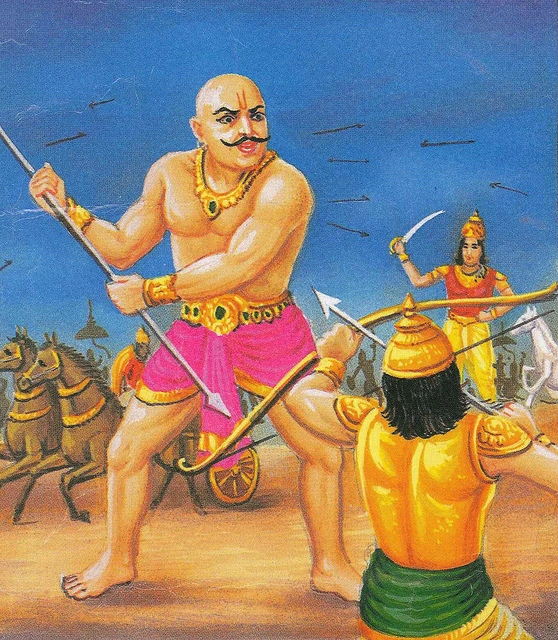
Who was Ghatotkacha?
Ghatotkacha was the son of Bhima, one of the Pandava brothers, and Hidimba, a demoness. Ghatotkacha played a big role in the Kurukshetra War. He was known for his incredible strength, magical abilities, and loyalty to his family.
Ghatotkacha could change his size at will, becoming a giant during battles. His most important contribution was when he fought for the Pandavas in the war. His presence on the battlefield terrified the Kaurava army because of his fierce fighting and magical powers.
Ghatotkacha Son
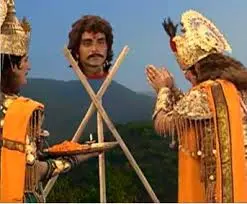
Ghatotkacha son name was Barbarika but he had three sons: Barbarika, Anjanparva, and Meghavarna.
Barbarika had incredible powers and abilities which he showed in Kurukshetra War. Barbarika was beheaded by Lord Krishna before the war because his powers were so immense that his participation would have made the war unfair. Krishna granted him a boon, allowing his head to witness the entire war from a distant hilltop. After the war, Barbarika’s head was worshipped as Khatushyamji in Rajasthan, India.
Ghatotkacha Father
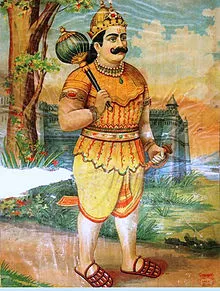
Ghatotkacha Mother
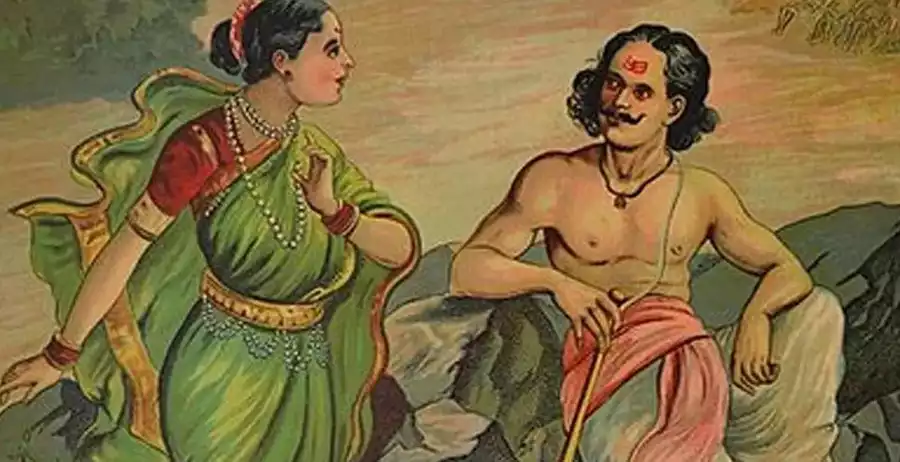
Ghatotkacha mother name was Hidimbi, a Rakshasi (demoness) princess. She encountered Bhima, one of the Pandava brothers, during the Pandavas’ exile in the forest. Bhima and Hidimbi fell in love, and Ghatotkacha was born from their union. She meets Bhima in the 9th sub-parva (Hidimva-vadha Parva) of the Adi Parva. She is also referred to as Bhuṭanadevi or Pallavi. After Ghatotkacha’s birth, Hidimbi returned to her own realm, leaving Ghatotkacha under the care of Bhima.
Ghatotkacha Wife
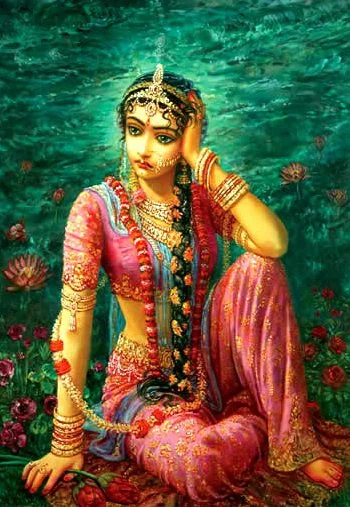
Ghatotkacha wife name was Ahilawati (Ahilāvati), also known as Mauravi (Mourvi, Maurvi) and Kamkanthika was Ghatotkacha’s wife. She was the daughter of Ahilabala, the king of Manipura. Ghatotkacha and Ahilawati had a son named Anjanaparvan, also known as Barbarika. Ahilawati’s story is not as extensively detailed in the Mahabharata as some other characters, but her marriage to Ghatotkacha is mentioned in various versions of the epic.
Ghatotkacha Mahabharata Story
Ghatotkacha, with his unique pot-shaped head and formidable strength, grew up in the care of his mother and the affection of his uncles, the Pandavas. From a young age, he proved himself to be exceedingly devoted to his father and his uncles, earning their love and admiration.
As Ghatotkacha matured, his prowess in battle matched his father’s, and he became a formidable warrior in his own right. Blessed with the ability to fly through the sky and endowed with incredible strength, Ghatotkacha stood as a worthy adversary to any foe.
The bond between Bhima and Ghatotkacha was unbreakable, forged through love and shared battles. Whenever Bhima thought of his son, Ghatotkacha would appear before him in an instant, ready to serve his father and his family with unwavering loyalty.
1. Parentage and Birth:
Ghatotkacha’s lineage is a tale of contrasts. Born to Bhima, one of the Pandava brothers recognised for his big strength, and Hidimba, a rakshasi recognized for her supernatural competencies, he inherited a unique mixture of human and rakshasa developments. This unique parentage set the stage for his tremendous abilities and look.
2. Appearance:
Ghatotkacha’s physical look became nothing quick of mind-blowing. With a massive, pot-fashioned head that earned him his call (Ghatotkacha way ‘one with a pot-shaped head’), he stood out from the opposite characters in the Mahabharata. His implementing shape, frequently depicted with fiery red eyes and a towering presence, added an detail of mystique to his character.
3. Powers and Abilities:
Ghatotkacha possessed high-quality powers due to his rakshasa background. He had the ability to alternate his length at will, making him an impressive adversary at the battlefield. In conflict, he could develop to colossal proportions, causing fear and havoc amongst his enemies. His talent in magic and illusion further more desirable his mystic prowess.
4. Role in the Mahabharata:
Ghatotkacha’s most huge appearance is within the Indian epic, the Mahabharata. He played a pivotal position within the Kurukshetra War, combating alongside his Pandava cousins. His involvement added an detail of unpredictability to the battlefield, frequently leaving his adversaries bewildered and confused with the aid of his supernatural capabilities.
5. Sacrifice for Victory:
One of the maximum poignant and mysterious components of Ghatotkacha’s individual is his final sacrifice. Recognizing the dire state of affairs at the battlefield, Ghatotkacha gives a solemn prayer to Lord Krishna. In response to his plea, Krishna instructs him to use his last energy, the “Rakshasa-mukha-badanam” (a powerful rakshasa shape) that he had inherited from his rakshasa lineage. Ghatotkacha complies, understanding that this will cause his own demise but also result in the downfall of the Kaurava navy. His selfless sacrifice certainly turns the tide of the struggle.
6. Legacy:
Ghatotkacha’s legacy lives on through his son, Anjanaparvana, who played a minor however sizeable position in later Hindu mythology.
Intriguing and enigmatic, Ghatotkacha remains a person whose mystique is as fascinating as his exceptional abilities. With courage and determination, Ghatotkacha fought tirelessly, driven by his sense of duty and honor. Though his time on the battlefield was brief, his impact was profound, leaving a lasting legacy of bravery and sacrifice.
Ghatotkacha Temple
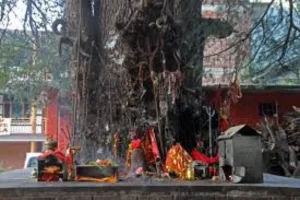
There are several temples dedicated to Ghatotkacha, particularly in regions of India where he is venerated as a deity. One notable temple is the Ghatotkacha Temple located in Manali, Himachal Pradesh by the name of Ghatotkach Tree Temple, India. This temple is situated in the Naggar Castle premises, which is around 21 kilometers from Manali town.
The Ghatotkacha Temple in Manali is believed to be one of the oldest temples in the region and holds significant cultural and religious importance. It is dedicated to Ghatotkacha, who is revered as a deity known for his protection and benevolence. Devotees visit the temple to seek blessings for their well-being, particularly for protection from evil forces and to overcome obstacles.
The temple attracts pilgrims and tourists alike, especially during festivals dedicated to Ghatotkacha, such as the Ghatotkacha Fair, which is celebrated with great fervor in some regions of India.
Apart from the Ghatotkacha Temple in Manali, there may be other temples dedicated to him in various parts of the country, especially in regions where he is worshipped as a deity or revered for his heroic deeds in Hindu mythology.
Ghatotkacha FAQs
Q1. How did Ghatotkacha Died?

Ghatotkacha met his end in a fierce battle with Karna, who used the divine weapon Vasavi Shakti, gifted to him by the god Indra. This weapon could only be used once, and Karna had reserved it for his arch-rival, the foremost Pandava warrior, Arjuna. This event marked a significant loss for the Pandavas, as Ghatotkacha’s death had a profound impact on the course of the war. Despite his intention to save the Shakti for Arjuna, Karna found himself compelled to use it against Ghatotkacha, as he could not refuse Duryodhana’s request.
In the annals of the Mahabharata, the story of Ghatotkacha stands as a testament to the strength of familial bonds and the indomitable spirit of a warrior determined to uphold righteousness in the face of adversity.
Q2. What were Ghatotkacha's powers and abilities in the Mahabharata?
Ghatotkacha was a powerful warrior with the ability to get invisible with ‘maya’ & change his size at will, becoming gigantic in battle. He was known for his strength, magical abilities, and loyalty to his family.
Q3. How did Ghatotkacha respond when Bhima thought of him?
Whenever Bhima thought of Ghatotkacha, the loyal son would appear before him instantly, ready to serve his father and his family with unwavering loyalty.
Q4. What was Ghatotkacha's Height?
Ghatotkacha’s height is described as being immense, towering over ordinary humans and even many of the other warriors on the battlefield. While an exact measurement is not provided, he is often depicted as being extraordinarily tall and powerful.
Q5. Ghatotkacha fought against many characters in mahabharat except Karna who were those?
Ghatotkacha engaged in war with various characters in the Mahabharata apart from Karna. Some of the notable characters he fought against include:
Drona: Ghatotkacha was involved in the battle where Drona, the master of arms, was slain.
Aswatthama: Ghatotkacha’s son, Anjanaparvan, fought against Aswatthama in single combat, showcasing his valor and skills on the battlefield.
Jayadratha: Ghatotkacha was involved in the killing of Jayadratha, a Kaurava warrior, which Arjuna’s killed before the sun set.
Bhagadatta: Ghatotkacha was part of the battle where Arjuna killed Bhagadatta, who rode the elephant Supritika like a second Indra.
Abhimanyu: Ghatotkacha engaged in battles alongside Abhimanyu, the valiant son of Arjuna, during the Kurukshetra War.
